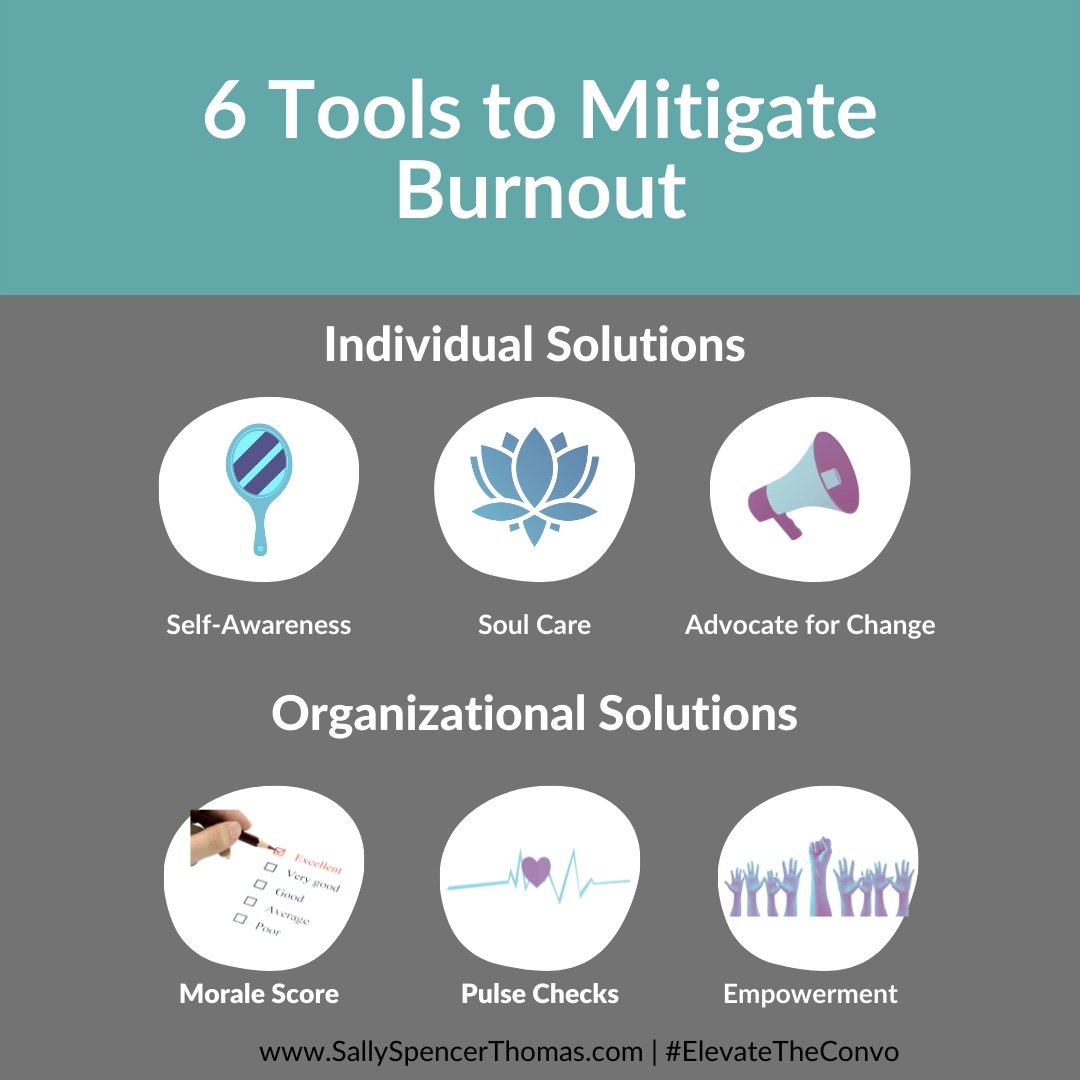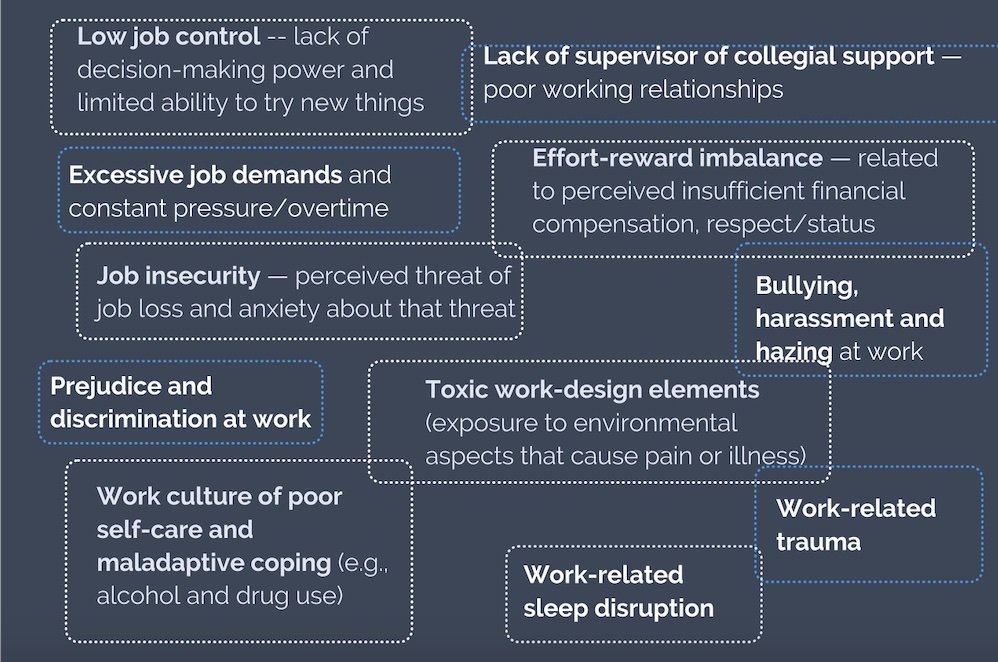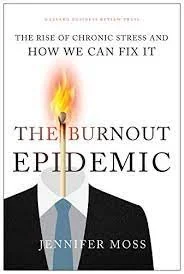“Burnout is not a self-care problem…We are all in a global rest deficit.”
~ Jennifer Moss, Author of “The Burnout Epidemic” at the National Council for Wellbeing conference in Washington, D.C.
Burnout, The Great Resignation and the War for Talent
Burnout plagues workers, parents, students, and countless others. According to SHRM[1], in 2021 47.8 million workers quit their jobs, making the monthly average almost four million and the highest resignation rate on record. Fortune[2] reported that for 30% of workers left behind getting work done is a significant challenge, resulting many feeling decreasing loyalty as everyone fights for the war for talent.
Many speculate that this great churn in labor is the result of crippling burnout.
Another study by the American Psychological Association[3] found that burned-out employees are 63% more likely to take a sick day and 23% more likely to visit the emergency room. All of this adds up to lost productivity, higher costs, and a lot of miserable people.
In Part 1 of this series on burnout, we explained what burnout is, the ways it affects body and mind, and how it differs from tiredness and depression. In part two of this series, we outline what everyone really wants to know: how we can thwart burnout.
While all industries seem to be impacted by burnout given the incredible challenges imposed by Covid-19, social unrest, labor shortages, economic/supply chain concerns, a VUCA (Volatility, Uncertainty, Complexity, Ambiguity) environment[4] and other stressors, essential workers and workers balancing caregiving and working from home seem to have exacerbated levels of emotional exhaustion, cynicism and poor self-efficacy.
"Construction work has always been challenging, and now everything is harder. No one has lifted their head to say, 'what's going on?' -- we just keep on grinding away," said Steve Hauschilt, CEO of Graham Construction Company in Des Moines, Iowa. "We recruit a bunch of tough people into this industry, but sometimes we need to bring in an outside perspective to help us talk and normalize the conversation on burnout and mental health."
Organizational Roots, Individual Frame
Recommendations for burnout tend to stop with the individual: take some time off, optimize your physical health, practice mindfulness, and seek meaning. Yet this limited advice merely acts as an extension of the belief that burnout only encompasses exhaustion.
In reality, the two other elements—cynicism and inefficacy—primarily relate to external factors: relationships between coworkers, the rewards system implemented by management, company policies that inform staffing levels, historical disempowerment of disadvantaged groups. Many of these organizational patterns feed burnout far more than fatigue and are well beyond the control of one person.
In the list of some of the workplace “psychosocial hazards” below we find many root causes that contribute to burnout. Many are the result of job design, managerial practices, and a disconnect to the mission of the work – things that are often outside of an individual worker’s control.
Jennifer Moss wrote for a Harvard Business Review article[5], “Although developing emotional intelligence skills — like optimism, gratitude, and hope — can give people the rocket fuel they need to be successful, if an employee is dealing with burnout, we have to stop and ask ourselves why. We should never suggest that if they’d just practiced more grit or joined another yoga class or taken a mindfulness course, their burnout would have been avoided. I have long been a proponent of empathy and optimism in leadership. I believe in practicing gratitude skills for a happier, higher performing work and life experience. I endorse the idea of building resilience to better handle stress when it arises. But these skills are not the cure for burnout, nor are they the vaccine.”
To add to matters, social expectations—particularly "glamorizing the grind”—idealize practices that all characterize the highest-risk jobs for burnout, including excessive hours and workload, minimal time off, and a lack of support. Further, social media induces our human tendency to compare ourselves to others, reducing the meaning or value we find in our own work because we no longer think it's good enough.
All of this is to say that although burnout profoundly affects the individual, it's truly a social phenomenon, not a private one. Therefore, focusing advice on the individual inherently limits its utility. However, it can still be a vital part of coping internally with burnout and building up buffers to minimize burnout’s impact while also seeking external change.
Individual Solutions
We're often unaware that we're burning out since it's a "slow drip." Much like the popular concept of slowly increasing the temperature of a frog boiling in water so it doesn't notice, burnout creeps up on you.
Tool #1: Self-Awareness
The first step to combat burnout: recognize that you are experiencing it. Feeling tired, out of shape, like you're "getting old" or the work is stale—we tend to attribute these feelings to personal failures. But they're all indirect signals that you're burning out.
Like any health issue, early identification is best. Take an adapted version of the Copenhagen Burnout Inventory to see how high your burnout score is:
1. Is your work emotionally exhausting?
0 1 2 3 4 5
Very Low Somewhat Very High
2. Do you feel burnt out because of your work?
0 1 2 3 4 5
Very Low Somewhat Very High
3. Does your work frustrate you?
0 1 2 3 4 5
Very Little Somewhat Very Much
4. Do you feel worn out at the end of the working day?
0 1 2 3 4 5
Never Sometimes Always
5. Are you exhausted in the morning at the thought of another day at work?
0 1 2 3 4 5
Never Sometimes Always
6. Do you feel that every working hour is tiring for you?
0 1 2 3 4 5
Never Sometimes Always
7. Do you have enough energy for family and friends during leisure time?
0 1 2 3 4 5
Always Sometimes Never
Scoring
25-35 Exceptionally high burnout score
15-24 Moderately high burnout score
0-14 Low burnout score
Once you determine that you're burning out, identify the origin. Otherwise, anything you do to alleviate it will merely be a band-aid.
Tool #2: Soul Care
Dedicate free time to what you love. Spiritual leader Barry Bradford, suggests that we think of our schedule as "a statement of love" and occupy our free time with activities that ground and fulfill us. Regular self-care – like baths, meditation and yoga – may not protect us from burnout.
We need “soul care,” according to Trauma and Suicide Prevention Specialist Sarah Gaer.
“We are more than a combination of physical parts – a body and a brain,” says, Sarah. “We are deep, spiritual beings that become worn down by wear and tear. To prevent burnout, we must expand the concept of self-care to practices which makes our soul sing.”
When work becomes a dread, say yourself, “Life is too short to be miserable. Is there a way to insert joy and meaning back into this project or task, or is it time to let it go? How can I make space for a passion for living?”
What this often means is to strengthen work-life boundaries—keep your work at the office (or to one area of your home), if possible, and be willing to say "no" when needed. Let go of "the hustle" as it's an unrealistic ambition that leaves you with little time for what makes life worthwhile. Establish reasonable expectations, understand your limits, and separate your self-worth from your profession. Your value as an employee—and as a person—doesn't come from countless hours on projects and always being "on call," but from the experience, insight, and style you bring to the table.
Prioritize soul care. Connect to something larger than yourself – at work or outside of work. For some this means philanthropy, volunteering or social justice work. For others this means being in awe of nature or relishing in meaningful art experiences. For others it means engaging in faith and spiritual practices that nourish.
Ask yourself and your team – what does “soul care” look like at work? How can teammates hold each other accountable for prioritizing soul care in a VUCA environment?
Tool #3: Advocate for Change and Take Back Control
Finally, individuals must stand up to the psychosocial hazards at work. Whether this means toxic coworkers, unrealistic expectations or significant effort-reward imbalance – talk about your specific concerns with your manager. Collaborate to negotiate compromises or alternative options. Demand healthier work norms around urgent requests and after-hours communication. Discuss ways you would like to be recognized at work, what things do you need from your team and manager to refuel your tank.
Organizational Solutions
While individuals can do a lot for themselves, burnout tends to occur on a larger scale. Politically disadvantaged demographics such as women and BIPOC are more prone to experiencing it. The policies that workplaces and governments implement hold profound implications for how individuals manage their lives. So, what changes can we push for?
Policies and Practices
Expecting a reasonable number of work hours and workload
Examine reduced or flexible hours
Have adequate staffing
Policies that protect workers from false accusations, discrimination, and retaliation
Establish principle-centered mission that values the whole person
Implementing paid leave policies, ensuring fair wages, and encouraging transparency in the workplace
Recognition and Rewards
Provide recovery time, especially during periods of high demand
Offering professional development opportunities where workers can build on their strengths
Understanding workers’ “psychological oxygen” – what do people need to refuel and feel valued
Acknowledge and model healthy lifestyle choices among employees
Programs
Expand to mental health support systems and offer culturally responsive supports
Offer proactive burnout assessments and “pulse check surveys” to notice trends in stress
Conduct burnout mitigation and psychological safety training for managers
Offer resiliency building workshops for workers
Manager’s Tools
“What can we do for each other to make this week better, easier and more fun?”
Steve Hauschilt, CEO of Graham Construction Company suggests the following approaches to help build teams more resilient to burnout.
Tool #4: Morale Score
Each week managers rate morale for themselves and, their team and all related partners on a scale from 1 to 10. Then they submit the information to the entire Leadership Team, who is are looking for patterns in the data. If morale starts trending downwards, leadership can step in early to try to understand the root cause and ask, "How Can I Help?"
Tool #5: Monthly Manager Pulse Checks (A.K.A. “Rounding”)
Each month, the Managers ask each member of their team five questions to get a sense of worker well-being:
What is the best thing in your world right now?
Who deserves a high five or a pat on the back? (this information is then passed along to the CEO and Leadership Team. A handwritten note of acknowledgement is sent to the workers' home address)
What is your biggest challenge or stressor right now? Follow up: What’s one positive step you can take to change the situation?
Do you have the tools and resources you need to be successful at your job?
How can your manager best support you?
Tool #6: Provide Opportunities for Choice, Empowerment and Fun at the Team Level
Define the problems and challenges and enroll collaborative teams to develop systems and processes to address them. Emphasize the why of the work and empower them to help find solutions that contribute to the greater good. Offer a fun celebration when teams succeed – use humor, food, and a break in the action to let workers know they are valued.
Conclusion
If employers want to recruit and retain top talent, they must develop a culture of care. “People over profits,” Brent Darnell, expert on emotional intelligence often says. Workers today realize that quality of life is the best benefit, and work, while an important element, is only one aspect of happiness and wellbeing.
Acknowledgements
A special thank you to…
…the guest panelists who participated in the #ElevateTheConvo Twitter chat on October 28, 2021, hosted by Dr. Sally Spencer-Thomas. This post is based on the contributions of the following individuals:
Dr. Camila Pulgar, @DrCamilaPulgar
RN Susan J. Farese, @sjfcommo
CRNP Angel V. Shannon, @angelvshannon
Al Levin, Educator, @allevin18
Evan Whitehead, Educator: @EvanWhitehead00
Charles A. Francis from the Mindfulness Meditation Institute, @TrainingMindful
Barry Bradford, Spiritual Leader, @BarryMotivates
Jordan Brown, Advocate, @JPBrown5
…as well as Steve Hauschilt, CEO of Graham Construction Company in Des Moines, Iowa, Sarah Gaer, and Jennifer Moss, author of The Burnout Epidemic for their tips and tools.
[1] SHRM (2022, March 9). Interactive Chart: How Historic Has the Great Resignation Been?. Retrieved on June 2, 2022 from https://www.shrm.org/resourcesandtools/hr-topics/talent-acquisition/pages/interactive-quits-level-by-year.aspx.
[2] Leonhardt, M. (2022, March 17). The Great Resignation is sparking fears of a ‘Great Burnout’ that could cripple America’s workforce. Retrieved on June 2, 2022 from https://fortune.com/2022/03/17/could-the-great-resignation-lead-to-the-great-burnout/.
[3] APA (2015). Stress in America: Paying with our Health. Retrieved on June 2, 2022 from https://www.apa.org/news/press/releases/stress/2014/stress-report.pdf
[4] Dima, G.; Meses, an Schmitz, L.; Simon, M.-C. Job Stress and Burnout among Social Workers in the VUCA World of COVID-19 Pandemic. Sustainability2021,13,7109. https:// doi.org/10.3390/su13137109
[5] Moss, J. (2019). Burnout Is About Your Workplace, Not Your People. HBR. Retrieved on June 2, 2022 from https://hbr.org/2019/12/burnout-is-about-your-workplace-not-your-people.




